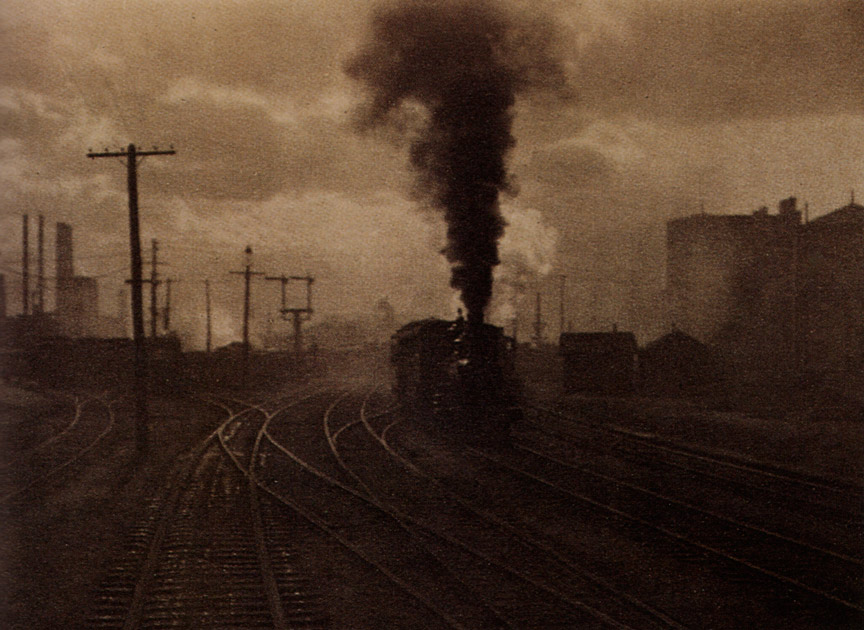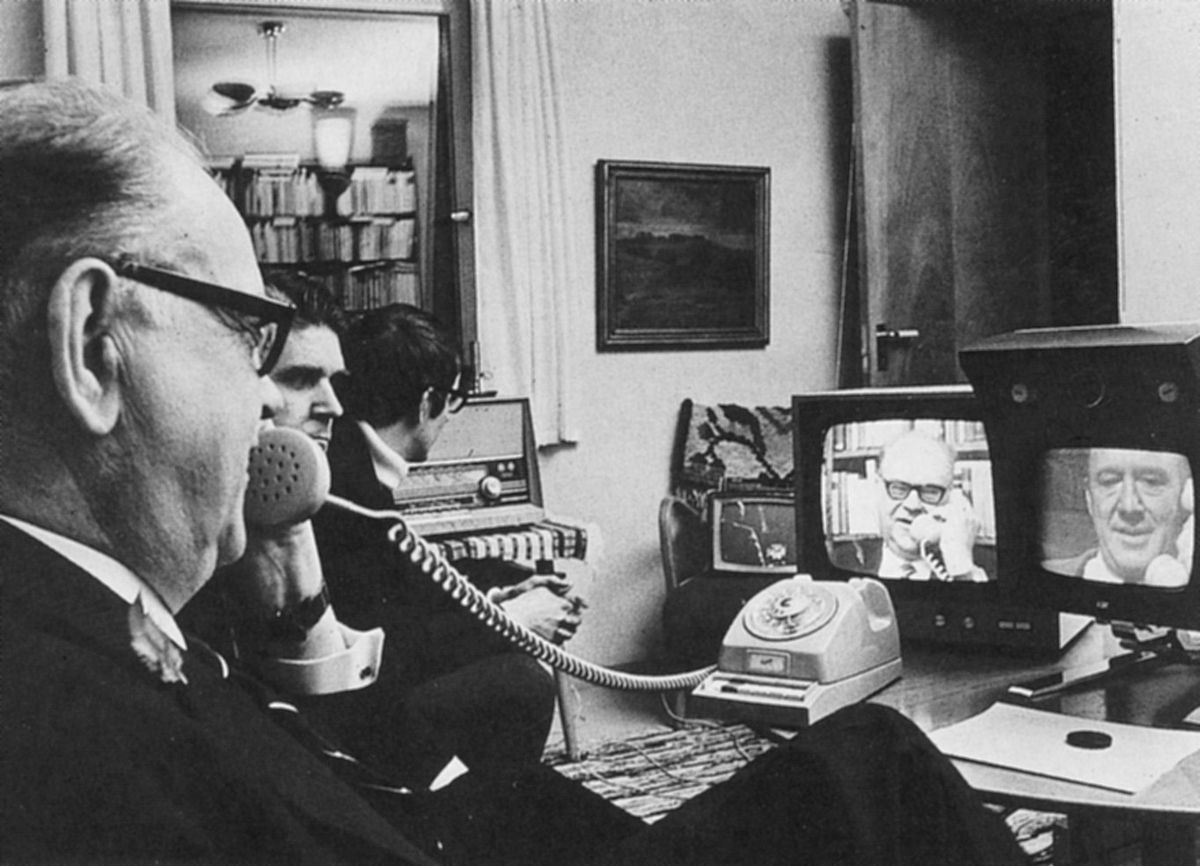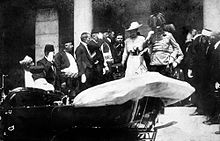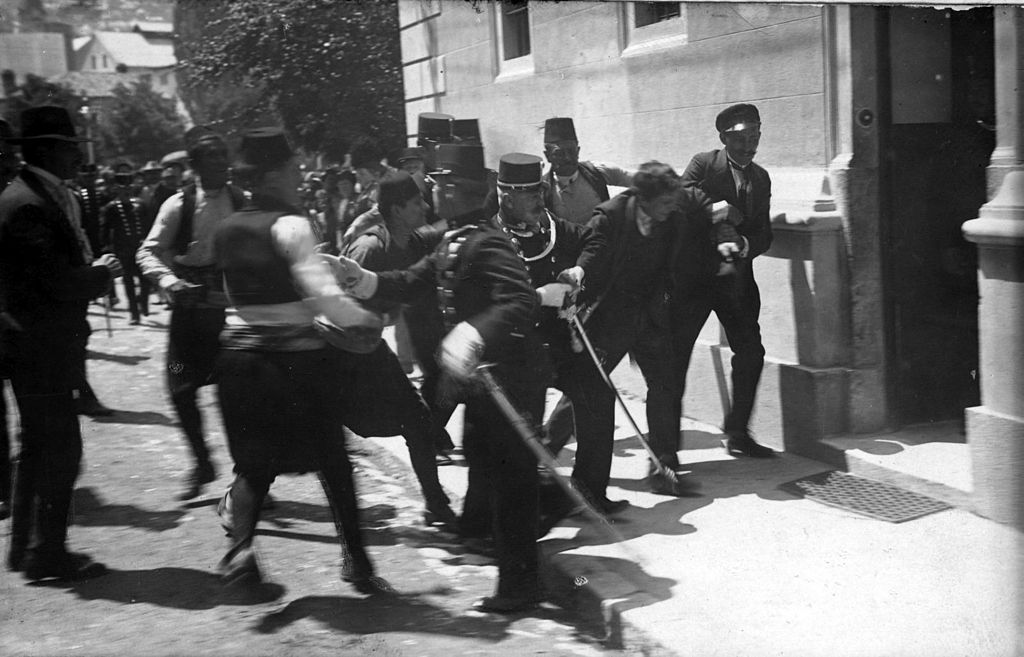
Figure 1 – F. Holland Day, “The Last Seven Words of Christ, 1898,” from the Wikimedia Commons and in the public domain in the United States because it is more than 70 years old.
There is an intimate exhibition of pictorialist photography at Boston’s Museum of Fine Arts that runs through February 22, 2015, entitled “Truth and Beauty.” This exhibition celebrates the museum’s recent acquisition of four major works related to the Boston leader of the movement, F. Holland Day. His The Seven Last Words (1898) (see Figure 1), purchased in 2013 and three portraits of Day by Edward Steichen, James Craig Annan, and Clarence H. White.
For those of you not in the know, like myself, the last seven words of Christ refers not to seven parting words, but to seven parting phrases that bear deep meaning in Christianity. The last of these called “the words of reunion” are “Father, into your hands I commit my spirit!” Holland Day’s work is a small series of self portraits depicting the Christ upon the cross. The copy at the MFA is much more subtle than the one depicted in the figure from the Metropolitan Museum in NYC. Day’s work has been referred to as “an important touchstone of Modernist photography,” by the New York Time. Because of its small size and delicate toning it connects you with a very personal spiritual moment, even if you do not share the particular religious connotation. This, I believe, is because it relates to a universal pattern of human consciousness – that which Joseph Campbell refers to as one of the great monomyths or the “Masks of God.”
Pictorialism as a movement in photography that triumphed in the thirty year period from 1885-1915, and like so many intellectual movements owes its demise, in part, to the traumatic events of the First World War. Its ascendance coincided with the fiftieth anniversary of the invention of photography and to the threat of impending mediocrity to the art posed by George Eastman’s introsuction of the box camera in 1888. These were fifty years during which the debate in the art world was whether photography was merely a means of recording an image or itself a fine art. It was highly influenced by both classic traditions and the contemporary concept of fine painting as being a means of conveying emotion through moody out-of-focus, often misty, imagery.
The first use of the term pictorial, in the context of photography, came in 1869 in English photographer Henry Peach Robinson‘s “Pictorial Effect in Photography: Being Hints On Composition And Chiaroscuro For Photographers.” He defined this style in terms of the then centuries old term from Italian painting “chiaroscuro” referring to the use of dramatic lighting and shading to convey an expressive mood.” Robinson advocated “combination printing,” mixing elements from multi-negatives and heavily manipulating the final print or negative.
Pictorialists often advocated and practiced the use of what they referred to as “enobling processes.” They would alter the appearance of their photographs using gum or bromoil printing. These are materials that stick to the emulsion and enabled the photographers to create highly moody effects and so much altered their images that they were often mistaken for drawings or lithographs. A classic pictorialist image of this type, that we have spoken extensively about before, is Edward Steichen’s “Flat Iron Building at Night, 1904.” It is probably a tribute to Steichen’s success with this image that today the blue versions are mistaken for early examples of color photography, which they are not. Another pictorialist photographer whom we have previously discussed is Annie Brigman. Among the striking images in the MFA exhibit is Alfred Stieglitz’s “The Hand of Man, 1902,” shown as Figure 2. It epitomizes the kind of moody imagery that defines pictorialism.
As noted, photography changed irrevocably with the world in 1914. However, the pictorialist movement, championed by such masters as Holland Day, Alfred Stieglitz, and Edward Steichen triumphed before photography evolved to its next phase. Their principal advocacy was to see photography accepted as a “fine art.” In 1910 the Albright Gallery in Buffalo bought 15 photographs from Stieglitz’ 291 Gallery.
As I’m writing this, I am revisiting the many wonderful works of the long career of Edward Steichen. A retrospective at the Whitney Museum in 2000-2001 in NYC began with his pictorialist images and ended with photographs like his “Matches and Match Boxes, 1926.” It demonstrates, on the one hand, how much art and photography have changed, and, on the other hand, how wonderful the medium is in its diversity.

Figure 2 – Alfred Stieglitz, “The Hand of Man, 1902.” From the Wikimediaxcommons and in the public domain because it was published before 1923.




